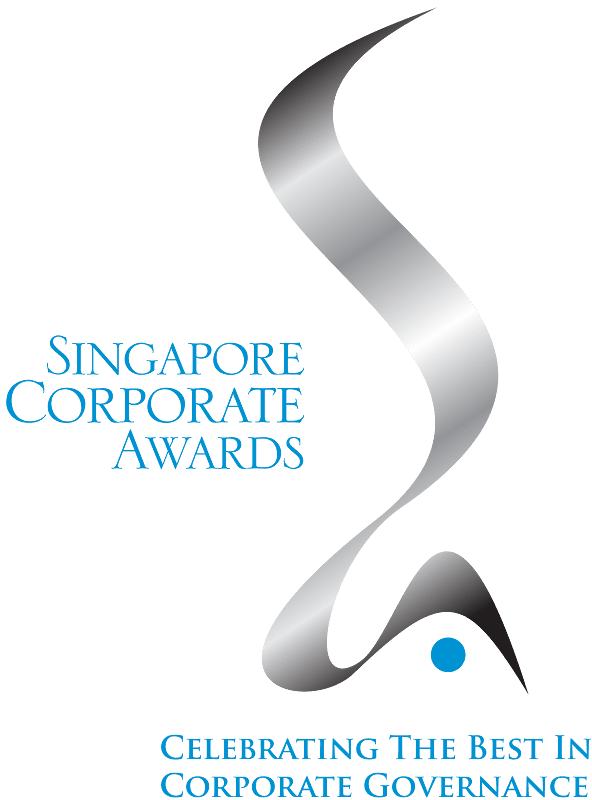BOARDS of directors play a key role in ensuring transparency, accountability, performance orientation, good processes and practices in companies.
The Business Times speaks to gold award winners of Best Managed Board at the Singapore Corporate Awards 2024 for their take on the value of strong corporate governance.
ROUNDTABLE PANELLISTS
- Kerry Mok, president and CEO, Sats
- Stephen Ho, CEO, Hong Leong Asia
- Lim See Wah, chairman and CEO, Hyphens Pharma International
Moderator: Mia Pei, journalist, The Business Times
What key trends will boards have to navigate to ensure their company’s long-term success?
Kerry Mok: Against an ever-changing macro landscape and geopolitical shifts, the following are some key themes and trends that boards may have to navigate in today’s world:
- Geopolitical tensions and regulatory challenges are increasingly common in today’s world. Political disputes and conflicts are leading to protectionist policies, complicating the regulatory landscape. This will likely raise the cost of compliance, requiring continuous monitoring of regulatory changes in all our operating locations.
- Supply chain disruptions are increasing due to geopolitical events and port congestion. While they may benefit air freight and cargo industries, they pose challenges for other businesses.
- Technology and artificial intelligence offer new ways to improve our operations, but they also increase the potential exposure to cybercrime.
- Macroeconomic volatility, such as rising interest rates and inflation, is driving concerns about the cost of funds for new investments and mergers and acquisitions. Energy price volatility and labour market trends are also critical cost drivers.
- There is an increasing need to integrate environmental, social and governance (ESG) considerations into business practices.
Stephen Ho: We are facing challenges today on many fronts – energy transition, technology disruptions and environmental concerns, to name a few.
The urbanisation of cities and global push for clean energy and green technology in particular, put Hong Leong Asia (HLA) at the crossroads of some of the world’s most pressing macrotrends. We have to redesign how we provide goods, services and other urban solutions to the end customer. At HLA, the board recognises that doing more with less carbon is the way forward, and that business as usual is not a sustainable option.
Lim See Wah: The key trends include demographics, geopolitical tensions, digital transformation and sustainability. We need to ensure that the company is equipped to capture opportunities while mitigating risks that arise out of these megatrends. Of course, at all times, we also need to be stakeholder-focused.
How can good governance contribute to this process?
Mok: Good governance ensures the organisation has the right structure and rigour in its systems and processes to identify and assess the impact of current trends on the business.
It also establishes an effective, transparent control environment, aligning the interests of key stakeholders and building trust with investors and regulators.
For example, geopolitical tensions are causing changes to trade flows, and companies are near-shoring their production facilities in response. A year ago, Sats made a risk informed decision and acquired Worldwide Flight Services, a significant global player in air cargo logistics, and expanded our coverage to over 215 locations across 27 countries. The combined network covers trade routes responsible for more than 50 per cent of global air cargo volume, and has given us opportunities to work with key industry players to innovate new products and services that could enhance the efficiency of air cargo logistics. In our first year of integration, we achieved a record revenue of S$5.1 billion and a profit of S$56.4 million.
Ho: We consider good governance practices a prerequisite for the company’s success. We launched our sustainability strategy in 2021, reorganising and focusing on three core areas: building our foundation of ESG performance, strengthening the integration of sustainability in our key business processes and priorities, and creating positive impact – which also provide a sustainability framework and code of business conduct to guide employees in creating a culture that will take HLA through the next decade and beyond.
Lim: The board consists of individuals with diverse skill sets who come together with a clear sense of mission and understanding of the responsibilities involved. We promote transparency, effective communication and adherence to the highest professional and ethical standards. Through regular communication with the management, we ensure alignment of strategy and action of the board and management.
What risk management framework and best practices has the board set up in recent years?
Mok: At the board level, our board of directors oversees Sats’ safety, sustainability and risk strategy and performance through the Safety, Sustainability and Risk Committee (SSRC) and executive management oversees these areas through the Safety, Sustainability and Risk Management Committee.
The committees shape the group’s safety, sustainability and risk management strategy and provide overall oversight, including establishing the risk appetite of the organisation, setting relevant safety and sustainability performance targets and key risk indicators and prioritising management efforts and resources on key areas.
The SSRC has recently endorsed the refreshed Enterprise Risk Management framework, which shifts the organisation’s risk strategy and philosophy from one that is more reactive to one that is more risk-intelligent and forward-looking. This is underpinned by design principles and a risk culture that aims to promote standardisation and consistency, avoid ticking the box, and be sharper by better prioritising areas to focus on.
Ho: Our approach to risk management is to have sound corporate governance practices and adhere to compliance processes that are integrated into all decision-making, which comprises conducting a quarterly review process to identify, evaluate and manage significant risks inherent in the business. This starts with the bottom-up assessment and prioritisation of the business risks, and ends with a balanced reporting to the board that enables a fact-based decision-making process at the board level.
With workplace safety and health of utmost priority to HLA, we regularly review and enhance the group’s occupational health and safety policy, and have put in place a reporting framework to align practices and ensure that corrective actions are implemented in a timely manner. The building of a risk awareness culture includes participation of business and functional leaders on safety activities such as safety audits, training and talks at least once a quarter.
This is embedded in our daily business activities. We believe that making the right decisions for our business requires a strong understanding of risk, and having proactive board oversight together with disciplined processes to manage our risks will enable us to do what matters for our employees, customers and other stakeholders.
Lim: The group has established an enterprise risk management (ERM) framework, guided by the Principles and Guidelines of ISO 31000:2009 and the Coso ERM Integrated Framework. This has involved the creation of a risk management policy and a risk organisation structure with clearly defined roles and responsibilities. Additionally, a risk management process has been implemented to enable the group to continuously assess, manage, report and monitor risks. An annual review of the ERM framework is conducted by an external risk advisory firm.
Against the backdrop of evolving regulatory expectations and polarisation of views on the importance of sustainability initiatives, what can boards do to find the right balance for the company’s broader business strategy?
Mok: To achieve a balance between sustainability imperatives and the traditional definition of business success, high-performing boards should prioritise the following: ensuring regulatory compliance and anticipating risks; engaging in open and inclusive dialogues with shareholders, customers, employees, trade unions and communities; setting clear and measurable sustainability targets; regularly reviewing performance; and working with senior management to integrate sustainability into all corporate functions..
At Sats, we prioritise developing ESG understanding and skills among board members and senior management. We monitor global trends and integrate sustainability into our annual business strategy meeting, with the aim to ensure that every regulatory framework relevant to our operations worldwide is well-understood, anticipated and addressed proactively.
Our current focus is on preparing for the revised Singapore Exchange framework aligned with the International Sustainability Standards Board, the European Corporate Sustainability Reporting Directive and the regulatory requirements in the US.
Open and inclusive stakeholder dialogue is crucial for addressing diverse views on sustainability and for developing the corporate sustainability strategy. Sats conducted its first ESG materiality assessment in 2017, and regularly engages with stakeholders to ensure the relevance of ESG priorities. This year, the company updated its sustainability framework, focusing on decarbonisation, waste and packaging, sustainable sourcing, and diversity and inclusion. New measurable ESG targets include halving Scope 1 and 2 emissions, and achieving 35 per cent representation of women in leadership roles by 2030.
Ho: Boards must balance sustainability initiatives with business strategies which means having a clear understanding of the company’s defined corporate purpose to ensure business resilience and long-term success.
For HLA, we are guided by a shared vision to develop and deliver sustainable and innovative urban solutions for cities of the future. This has helped us to strengthen alignment across the organisation and integrate our core values and principles across our operations.
Also, to enhance our assessment on identified opportunities, the board sustainability committee now includes climate risk management oversight, which provides a platform to dive deeper into understanding new trends and technologies such as supply chain decarbonisation and carbon capture, utilisation and storage technologies.
It is a long journey to progress while navigating through technology and regulatory changes, and the opportunity is to look further ahead to make strategic investments that will create a positive impact on our business in the future.
Lim: Society has come to expect that organisations should balance profitability and responsibility. Acknowledging the importance behind this, we have integrated sustainability into our overall responsibility strategy. The board actively supports management in understanding this imperative and putting it into action, recognising that commitment to sustainability can open doors to new business opportunities and strengthen our positive impact on the community.
How does the board measure its effectiveness, and how does the board align directors’ compensation with shareholders’ interests?
Mok: The nominating committee conducts an annual evaluation of each director’s contributions to the board, as well as periodic evaluations as needed using questionnaires. The questionnaire assesses the directors’ performance on the board and its committees, as well as their peer performance and self-assessment of independence. Every three years, an external consultant is brought in to facilitate the board evaluation process. Additionally, during this period, the external consultant will gather feedback from group management board members. The company secretary compiles the results from the questionnaires and feedback received from the directors, and shares them with the board chairman, nominating committee members and the entire board.
In addition, our directors receive 70 per cent of their directors’ fee in cash and 30 per cent in the form of Sats shares. This arrangement is designed to align the directors’ interests with the company’s performance.
Ho: We believe that the effectiveness of a board is about its effectiveness in driving corporate strategy, and safeguarding interests of key stakeholders. Our board measures its effectiveness which comprises quantitative and qualitative components based on measurable performance criteria that are aligned with the overall business strategy.
In the light of HLA’s increased focus on integrating sustainability into our business operations, over the past year, we have also included ESG targets as part of performance evaluation for HLA’s management team to ensure that priorities are aligned with the overall business strategy to create long-term value for stakeholders.
Furthermore, we have also established the links between our ESG performance with the remuneration of key management personnel. The ESG key performance indicators include those of the health and safety of employees and the use of recycled and alternative materials in cement and concrete. These ESG key performance indicators form a minimum of 20 per cent of total performance evaluation in 2024.
Lim: A survey is carried out annually to evaluate the performance of the board and board committees. The board aligns directors’ compensation with shareholders’ interests through equity plans, market benchmarks, governance reports, sustainability commitments and internal reviews, ensuring effective corporate governance and annual policy revisions.





